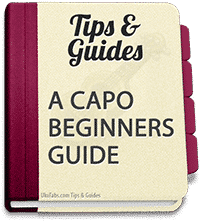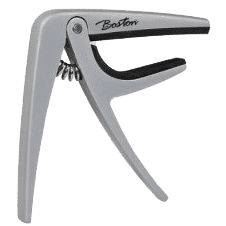I recently received a request to write a guide to using a ukulele capo. This was a great idea and so here it is: the complete ukulele capo beginner’s guide!
The complete ukulele capo beginner’s guide
For a long time, it didn’t really occur to me to write a guide on this subject, probably because of my guitar background where I used my trusty capo all the time. When I picked up an ukulele and started playing it, I never thought twice about difficulties with the capo or questions about how to use it. Hopefully this guide will help you understand what a capo is, how to use it and what types of capos are out there.
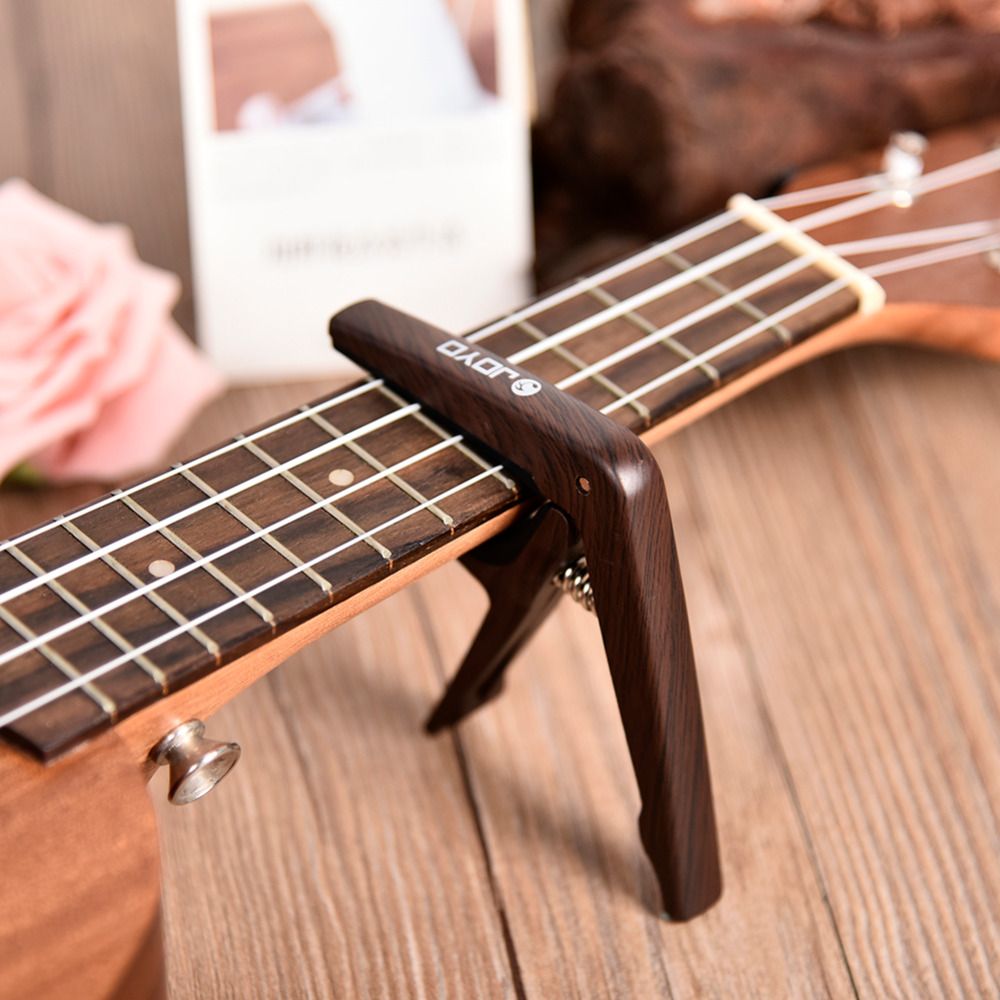
What is a capo?
Capo is short for capotasto, which is Italian for “head of fretboard”. It is small tool you can strap around the neck of your ukulele to keep all the strings down on the same fret. So essentially, you are barring the strings on that particular fret with a capo instead of your finger.
Historical fact: Giovanni Battista Doni first used the term in his Annotazioni in 1640, though capo use probably began earlier in the 17th century. The first patented capo was designed by James Ashborn of Walcottville, Connecticut, USA.
What can you do with a ukulele capo?
Now that you know what it is, you probably want to know what it is used for. Using a capo will raise the pitch of the instrument, allowing you to play in different keys without all the hassle of using the tuning pegs to tune your ukulele to a higher key or transposing the chords.
Example: The standard tuning for a ukulele (GCEA) is also called “C” tuning. Remembering that the order of notes is the following: A A# B C C# D D# E F F# G G#, putting a capo on the second fret will transform your ukulele’s tuning to a “D” tuning, two half steps higher.
To illustrate this, let’s look at two basic ukulele chords: C and G. Two very familiar chord shapes, 0002 and 0232 respectively. Typically used in songs in the C key.
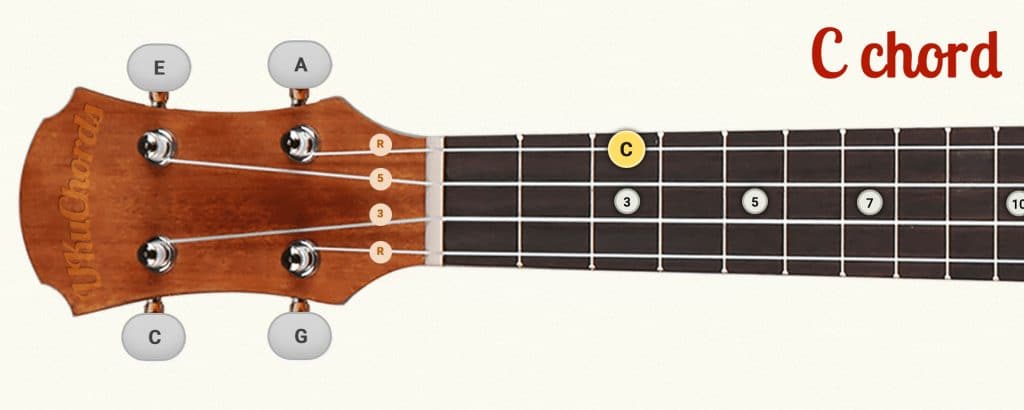
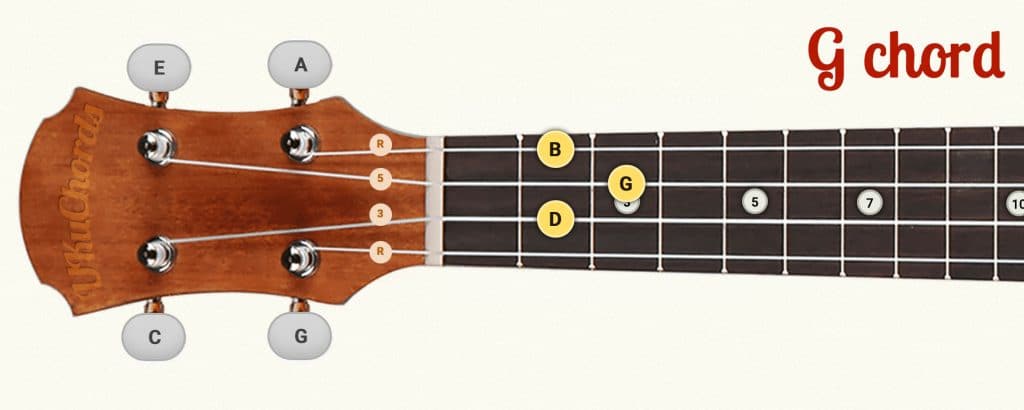
When we put a capo on the second fret (capo 2 or capo II) the tuning or pitch of the whole ukulele is transposed two half steps up. When you play the same chord shapes as above, the chords you’ll actually be playing are now D and A.
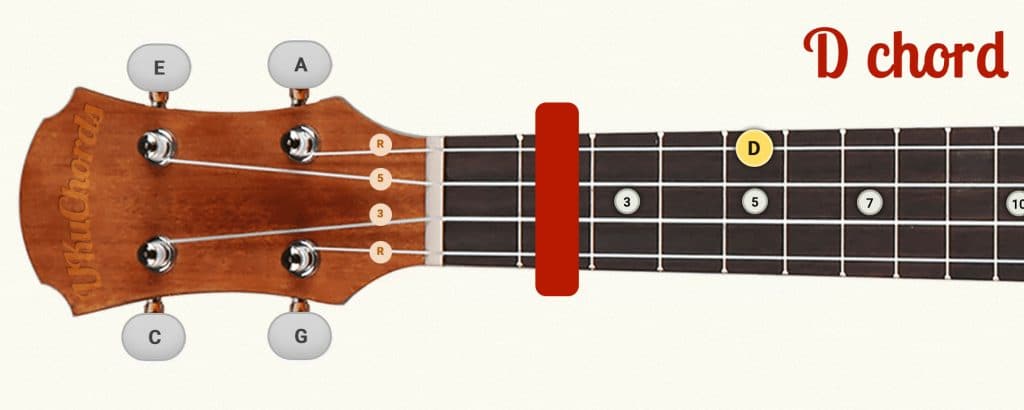
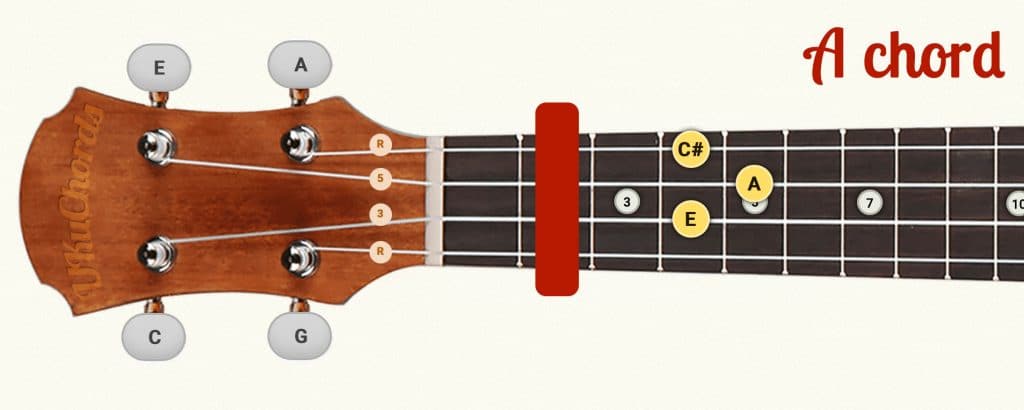
A capo is also helpful when you are trying match a singer’s vocal range more closely. Raising the pitch of your uke one or two half steps is often all it takes to make things more comfortable for the singer.
When is a ukulele capo used?
There are two main reasons why you might want to use a capo. The first one is to raise the pitch of a song to a different key so that it will match your vocal range.
The second reason is the following. On UkuTabs you’ll sometimes see “alternative version” as a note at the beginning of a song. That means that you can try to transpose the song down to make the song easier to play.
For example: transposing 1 step down changes A#m to Am, which is much easier to play. However, if you are playing along with the original recording, this won’t sound good. To get back to the same key, you can put a capo on the first fret and still play the Am chord. Now you are still in the same key as the recording, but the chords are much easier to play. Not all the chords posted along with songs on UkuTabs require the use of a capo. You can decide for yourself whether you want to transpose the key and use a capo or not.
Do I need a ukulele capo?
This is a personal choice. For example, I used the capo myself quite a lot when I started playing the ukulele, but nowadays I don’t use it at all. When you get better, you’ll learn how to play that A#m chord. I also find it easier not to rely on a capo when playing songs. All the same, it is an amazing tool for beginner ukulele players since it allows you to play a wider range of songs using the transpose/capo solution.
What kinds of capo are there?
Spring-loaded capo
This is by far my favourite type of capo. The handle is spring-controlled, and it allows you to change the capo’s position on the fretboard quickly with one hand. However, you cannot adjust the pressure applied to the strings and it tends to get quite bulky. I suggest looking at the several brands offering this type of capo. Kyser is a well-known brand that sells a very decent ukulele/banjo capo and is about $20. There are however cheaper alternatives such as this $7 one and get 5 stars on Amazon.
The C-clamp capo
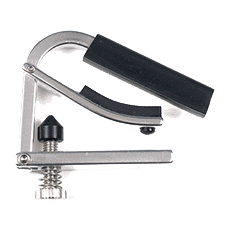
There is one big player on the clamp ukulele capo market and that is the L9 Lite Ukulele Capo made by Shubb at about $20 and comes in different colors. A C-clamp capo allows you to adjust the pressure applied to the strings by turning the little screw. You have to use the lever to put it on your ukulele. These capos are very sturdy, reliable and compact. However, they are also the most expensive capos.
The elastic / toggle capo
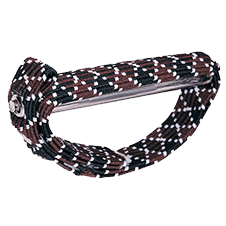
These are the cheapest capos out there. You can buy a few of them for the same price as one spring-loaded or clamp capo. They are very lightweight and use a notched system or elastics to attach to your ukulele and tighten the strings. Although their low cost and small size are advantages, most of them are very low quality, tend to pull strings out of tune and break easily. Jim Dunlop offers an elastic ukulele capo for less than $5 so it’s definitely worth a try.
NS Ukulele Capo Pro

This is one of the more recent capos: a dedicated ukulele capo by D’Addario (aka Planet Waves). It is a very lightweight capo, made of aluminium, with a very small footprint on the ukulele neck compared to the others (except the elastic capo). It is not that easy to manoeuvre around the fretboard once installed, but that’s one of the only downsides. The PW-CP-12 NS is the latest model at round $15.
I have a guitar capo. Can I use that too?
Of course you can, nothing is stopping you from using your guitar’s capo! I have a black Jim Dunlop 83 guitar capo. It works just fine, but I must say I rarely use it anymore. If you are planning to use a capo on your ukulele regularly, I would go for a capo designed specifically for the ukulele.
One final note
While a capo can really come in handy sometimes, I suggest only using it to change the key of your ukulele to match your voice. Actually play the original chords. Try not to depend on your capo when learning songs. If you come across a song with an unknown chord, you can always find the chord diagram at the top of each song or hover over the chord here on UkuTabs. If it’s not a song on UkuTabs, use the UkuTabs Chord Library to find out how to play that chord.
Need more input?
I hope this guide has taught you more about the ukulele capo and how and when to use it.
Feel free to contact me whenever you need more information.
Also interested in knowing how to hold your ukulele correctly?
